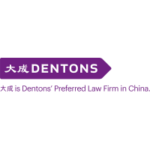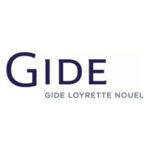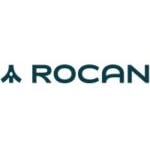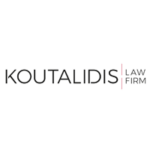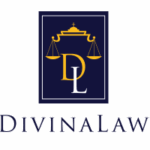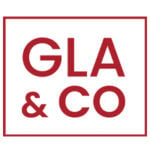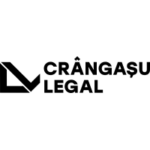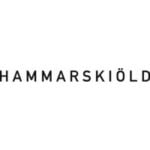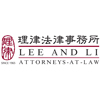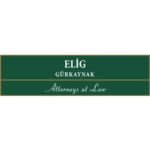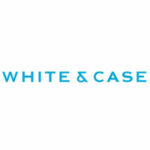-
Overview
Merger control is governed by the Federal Act on Cartels and other Restraints of Competition (“CartA”), and implementing provisions set out in the Ordinance on the Control of Concentrations of Undertakings (“MCO”). A proposed merger must be notified to the Swiss Competition Commission (“ComCo”) if, in the audited annual reports of the business year before the notification, the turnover figures of the undertakings concerned exceeded certain thresholds or if one of the undertakings concerned has, in proceedings under the CartA in a final and formally binding decision, been held to be dominant in a market in Switzerland, and the concentration concerns either that market or an adjacent market, or a market upstream or downstream thereof.
The notification results in an initial review which must not exceed one month and, if that initial review reveals indications that the planned transaction creates or strengthens a dominant position, a Phase II review which must be completed within four months. In total, ComCo’s review must be completed within five months, unless ComCo is prevented from completing its assessment for reasons attributable to the undertakings concerned. The preventive character of the merger control system is secured in that notified concentrations within the meaning of the CartA may in principle only be closed after their approval by ComCo.
The notification thresholds and the threshold to prohibit a concentration are very high. Accordingly, since the introduction of the preventative merger system in 1995, only four merger projects have been prohibited, and only two prohibition decisions have become final and binding.
- The first case was a merger in the media sector which was approved on appeal. The second case was the merger between France Telecom Switzerland (Orange) and Sunrise. ComCo stated the creation of a collective dominance between the newly merged entity and the Swiss incumbent Swisscom. The decision was not appealed.
- The third case concerned a merger between Ticketcorner and Starticket, the only two significant ticketing enterprises active in Switzerland. ComCo determined that the proposed merger between Ticketcorner and Starticket would have strengthened Ticketcorner’s dominance and eliminated effective competition in the market for the distribution of tickets by third parties. In its competition assessment, ComCo examined the position of the current providers of ticketing services active in Switzerland as well as potential market entries. It also examined the market development as well as the role technology companies, such as Spotify, Facebook or Google could play. Despite advances in technology, ComCo concluded that current and potential competitors would not be able to exert sufficient competitive pressure on the merged entity. This decision was under appeal before the Federal Supreme Court after the Federal Administrative Court had dismissed the appeal, when TX group, to which Ticketcorner belonged, in 2020 abandoned the merger project between Ticketcorner and Starticket and sold the latter to the British See Tickets group, which forms part of Vivendi Ltd.
- The latest case to which ComCo objected concerned the acquisition of Quickmail Group by Swiss Post which was notified to ComCo on 30 October 2023. Within the one-month investigation period, ComCo found indications that the concentration would establish or strengthen a dominant position in various markets and prohibited it Phase II (see further below).
Sometimes, mergers are approved subject to commitments. In 2024, ComCo analysed the takeover of the watch retailer Bucherer by watch manufacturer Rolex and foUnd indications that the merger would create or strengthen a dominant position in the national markets, as well as in the local markets in Geneva for after-sales services for Rolex and Tudor watches. Following commitments made by Rolex, the takeover was cleared without going into a Phase II review.
Finally, if a concentration of banks within the meaning of the Swiss Banking Act is deemed necessary by the Swiss Financial Market Supervisory Authority (FINMA) for reasons related to creditor protection, the interests of creditors may be given priority (Article 10(3) CartA). In such cases, FINMA takes the place of the Competition Commission and the latter is just invited to submit an opinion (Article 10, paragraph 3, CartA). This was last – and prominently – relevant in the case of UBS acquiring Credit Suisse, the formal decision on which was long awaited. It warrants some brief explanations.
Only on 19 June 2024, FINMA published the merger decision along with ComCo’s long-withheld opinion and therewith concluded its control procedure. FINMA, which had already approved the transaction on 19 March 2023, prior to UBS filing a merger notification (which was possible based on Article 17 of the Merger Control Ordinance), did not impose any conditions and obligations. In summary, although ComCo considered that there were indications that UBS would acquire or strengthen a dominant position (the threshold for an in-depth [phase II] investigation) in the markets for funds and fund-like products, global custody, passive asset management, Swiss real estate as an investment class, fund management for single investor funds, and corporate banking for large companies and companies with specific needs, it came to the prima facie conclusion that this would not eliminate effective competition. As the threshold for an in-depth (Phase II) investigation was met, however, ComCo recommended FINMA to conduct an in-depth (Phase II) investigation, which FINMA rejected, mainly for procedural reasons. FINMA held that merger control proceedings which fell in its jurisdiction were sui generis proceedings not subject to the procedural provisions set forth in the CartA. Accordingly, a one- or two-stage procedure (Phase I and Phase II) as provided for in Articles 32 and 33 CartA was not possible under these conditions. Although FINMA did not consider a Phase II examination possible, it nevertheless requested ComCo to carry out an in-depth analysis sui generis prior to completion of the merger notification by UBS.
FINMA specifically asked ComCo to examine whether the conditions for the failing company defence were met. Interestingly, ComCo concluded, based on publicly available information, that the conditions for a failing company defence were not met, because it had been reported that other undertakings had been interested in acquiring at least parts of Credit Suisse, that is, that there had been alternatives to the proposed transaction. Conversely, FINMA concluded that there was at no time a concrete, legally binding offer from another competitor willing to acquire Credit Suisse in whole or in significant parts. Furthermore, according to FINMA, on the weekend of 18/19 March 2023, no one other than UBS was in a position to take over Credit Suisse or significant parts of it.
Following FINMA’s decision and ComCo’s observations, the price surveillance authority, on 4 July 2024, decided to place UBS under observation to examine whether there were any indications of an abusive price increase or price maintenance. At the time of publication, the first market the Price Watchdog intended to examine was corporate banking.
Proceedings for which ComCo has jurisdiction (which are virtually all of the proceedings except, as mentioned above cases in the banking sector where creditor interests are endangered), are handled by the ComCo Secretariat and ultimately decided by the ComCo. In 2024, ComCo received 43 notifications and raised no objections within the one-month initial review period in 43 cases; in one case (carry-over from the previous year), a prohibition decision was handed down (Swiss Post). In the preceding years, it obtained 33 notifications (2023) 49 notifications (2022) and, respectively, 31 notifications (2021); only in two cases, an in-depth review was carried out.
ComCo published an explanatory note and merger form which is available online in the official languages.
-
Is notification compulsory or voluntary?
If either the thresholds stipulated in article 9 of the CartA are exceeded or one of the parties to the transaction has been found dominant in former proceedings pursuant to the CartA, notification of the concentration is mandatory (Article 9(1) and (4) CartA). A notifiable concentration is either a merger of two or more previously independent undertakings or a transaction by which one or more undertakings acquire direct or indirect control of one or more previously independent undertakings or parts thereof (Article 4(3) CartA).
-
Is there a prohibition on completion or closing prior to clearance by the relevant authority? Are there possibilities for derogation or carve out?
According to the CartA, the undertakings concerned must refrain from implementing the concentration during the one-month preliminary assessment of the assessment unless the Competition Commission has at their request authorized them to provisionally do so for good cause (Article 32(2) CartA).
This is a rather restrictively applied exception. In practice, the exception was granted in the case of restructuring mergers (failing company defense), public takeover offers, preservation of jobs.
a) Restructuring mergers (failing company defense)
The failing company defense has in the past led to the approval of mergers in only six cases. According to ComCo’s practice, the following criteria must be cumulatively met:
- the target would disappear from the market within a short period without support;
- most of the target’s customers would switch to the acquiring company which, accordingly, would absorb most of the target’s market share; and
- no more competition-friendly alternative to the merger is available.
The failing company defense was last rejected in the case of Swiss Post / Quickmail Group with its operating entities Quickmail and Quickpac. ComCo considered that the last condition was not met as there was an alternative purchaser interested in the Quickmail Group that had many years of experience in postal services. In ComCo’s view, a takeover by this alternative purchaser would ensure the continued presence of the Quickmail Group in the market, maintain competition with Swiss Post, and thus represent a more competition-friendly solution. If the alternative purchaser’s offer were to be accepted, bankruptcy proceedings due to excessive debt would not be necessary, and the Quickmail Group could continue to operate in the market as an alternative provider, benefiting consumers and business customers. Only two weeks after ComCo objected to the proposed merger, the Swiss company Planzer, a large family-owned logistics company, acquired the operating entities Quickmail and Quickpac.
In the case of UBS / Credit Suisse, the Swiss Financial Markets Authority FINMA, which was competent to assess the takeover instead of ComCo (see above), granted the exception, against ComCo’s advice. Based on publicly available information, ComCo concluded that the conditions for a failing company defense were not met, because it had been reported that other undertakings had been interested in acquiring at least parts of Credit Suisse, that is, that there had been alternatives to the proposed transaction. Conversely, FINMA concluded that there was at no time a concrete, legally binding offer from another competitor willing to acquire Credit Suisse in whole or in significant parts. Furthermore, according to FINMA, on the weekend of 18/19 March 2023, no one other than UBS was in a position to take over Credit Suisse or significant parts of it.
b) Public takeover offers
This exception was granted in one case to avoid a conflict with foreign financial market legislation for public offers. In the case Schaeffler / Continental (2008) , ComCo, before obtaining a complete notification, permitted the implementation of the transaction based on information obtained from the draft EU Form CO and supplemental information Schaeffler provided to ComCo, which did not reveal competition concerns, but subject to the condition that Schaeffler would exercise its voting rights solely for the purpose of preserving the full value of its investment until ComCo concluded its assessment (article 16(2) MCO).
c) Preservation of jobs
This exception was applied in a case in 1998, where the suspension of the implementation of the transaction would have resulted in the dismissal of 200 employees. However, ComCo ordered that the shares in the acquired undertaking remained with the depositary and the purchase price was not to be remitted by the depositary to the seller until ComCo rendered its final decision.
At the outset of a Phase II review, ComCo shall decide whether the concentration may exceptionally be implemented provisionally or whether it should remain suspended (Article 33(2) CartA). Provisional implementation may only be approved upon good cause, urgency and without impairment of ComCo’s ability to intervene upon completion of the Phase II review.
-
What types of transaction are notifiable or reviewable and what is the test for control?
All transactions exceeding the turnover thresholds or involving a dominant undertaking and affecting markets related to the market the undertaking had been held dominant must be notified to and reviewed by ComCo.
Control (single or joint) is defined as the ability to exercise a decisive influence over the strategic decisions of the other undertaking by the acquisition of rights over shares or by any other means (Article 1 MCO).
-
In which circumstances is an acquisition of a minority interest notifiable or reviewable?
The decisive criterion is whether the acquisition of a minority interest would give the acquiring undertaking control of the other undertaking to influence its strategic decisions.
-
What are the jurisdictional thresholds (turnover, assets, market share and/or local presence)? Are there different thresholds that apply to particular sectors?
Transactions captured by the merger control provisions must be notified to ComCo before their implementation if in the financial year preceding the transaction the undertakings concerned (i) together reported a turnover of at least 2 billion Swiss francs, or a turnover in Switzerland of at least 500 million Swiss francs, and (ii) at least two of the undertakings concerned each reported a turnover in Switzerland of at least 100 million Swiss francs (Article 9(1) CartA).
Regardless of turnover, transactions must be notified to ComCo before their implementation if one of the undertakings, in a former proceeding, has been found dominant in a market in Switzerland, and the concentration concerns either that market or an adjacent market or a market upstream or downstream thereof (Article 9(4) CartA).
-
How are turnover, assets and/or market shares valued or determined for the purposes of jurisdictional thresholds?
The turnover of an undertaking concerned consists of the turnover from its own business activities and the turnover of subsidiaries (100%), parent companies (100%), sister companies (100%), joint ventures (in equal parts amongst the controlling undertakings), except turnover from business activities between the aforementioned undertakings (Article 5 MCO) .
For the calculation of turnover, all reductions such as discounts, rebates, value added tax and other consumption taxes as well as other taxes directly related to turnover shall be deducted from the amounts derived by the undertakings concerned from the sale of products and the provision of services within the ordinary business activities of the undertakings concerned in the preceding financial year (Article 4(1) MCO).
-
Is there a particular exchange rate required to be used for to convert turnover thresholds and asset values?
Turnover in foreign currencies shall be converted into Swiss francs in accordance with generally accepted accounting principles applicable in Switzerland (Article 4(2) MCO). The conversion is based on the annual average exchange rate as published by the Swiss National Bank (SNB).
-
In which circumstances are joint ventures notifiable or reviewable (both new joint ventures and acquisitions of joint control over an existing business)?
New joint ventures are subject to merger control if (i) the notification thresholds are met by the undertakings involved (the controlling undertakings) (ii) the joint venture will perform all the functions of an autonomous economic entity on a lasting basis and if business activities from at least one of the controlling undertakings are transferred to the joint venture (Article 2(2) MCO). The second criterion is generally deemed fulfilled if the joint venture has full-function status, i.e. is equipped with sufficient resources to be able to operate independently on the market. Accordingly, the last criterion is generally not of significant importance and it suffices if one of the founding entities contributes a part of its business, a sales organization, production facilities or essential know-how.
The acquisition of joint control over an existing undertaking previously not controlled jointly is equally subject to merger control if the joint venture performs all the functions of an autonomous economic entity on a lasting basis (Article 2(1) MCO) and if the notification thresholds are met, whereby the jointly controlled undertaking is also deemed an undertaking involved.
If the joint control criterion is not met, such as when a joint venture allows for changing majorities, or if a joint venture does not perform all the functions of an autonomous economic entity on a lasting basis, a transactions may be subject to review under the applicable cartel rules in particular (article 5 CartA).
-
Are there any circumstances in which different stages of the same, overall transaction are separately notifiable or reviewable?
According to ComCo’s practice, which is based on the EU Commission’s practice, two or more transactions are to be regarded as a single concentration if they are so interdependent that one would not have been carried out without the other, except in such cases where control is ultimately not acquired by the same undertaking(s). In order to be regarded as a single concentration, the various transactions should occur within a period of one year. Conversely, if several transactions are not interdependent and the parties would carry out one transaction without the others, the transactions should be examined separately.
-
How do the thresholds apply to “foreign-to-foreign” mergers and transactions involving a target / joint venture with no nexus to the jurisdiction?
The CartA applies in principle to foreign-to-foreign mergers if the relevant turnover thresholds are met or if an undertaking is involved that has been found dominant in a former proceeding before ComCo and the markets affected by the merger is related to the market on which the undertaking is dominant. Hence, in principle, even foreign-to-foreign transactions involving a joint venture without nexus to Switzerland would formally be subject to notification. However, according to practice, in case of joint-ventures without nexus to Switzerland, notification is not required. No nexus to Switzerland is deemed to exist, according to practice, where the joint-venture does not or will not have turnover in Switzerland. Whether the exception applies, should be carefully analyzed and clarified, if deemed necessary, with the ComCo Secretariat, as the exception is applied narrowly.
For instance, the exception can only apply if it is obvious that the activities of the joint venture have no nexus to Switzerland and will not have in the near future either. In the case of a joint venture active in the erection, operation and maintenance of e-mobility charging infrastructures in Italy, ComCo took the view that Swiss consumers and e-mobility service providers located in proximity of the Italian-Swiss border could be interested in using the joint venture’s infrastructure and, accordingly, doubted that there was no nexus to Switzerland.
-
For voluntary filing regimes (only), are there any factors not related to competition that might influence the decision as to whether or not notify?
N/A
-
What is the substantive test applied by the relevant authority to assess whether or not to clear the merger, or to clear it subject to remedies?
According to Article 10 CartA, ComCo examines whether the proposed transaction creates or strengthens a dominant position liable to eliminate effective competition and does not improve the conditions of competition in another market such that the harmful effects of the dominant position can be outweighed (so-called qualified dominance test). The qualified dominance test makes it difficult for the competition authorities to prohibit merger projects. In the ongoing reform of the CartA the introduction of the SIEC-test as applied in the EU is discussed.
-
Are factors unrelated to competition relevant?
One criterion states that the competitive position of the newly merged entity on an international level must be considered, which could be qualified as an industrial policy related factor. Apart from this, a concentration which ComCo prohibited may be authorized by the Federal Council at the request of the undertakings involved for compelling public interest reasons (Article 11 CartA). To date, no request is known to have been filed.
In the case of UBS / Credit Suisse, FINMA assumed jurisdiction based on its assessment that the transaction was necessary for reasons related to creditor protection. In cases where FINMA is entitled to assume jurisdiction, creditor interests must be given priority.
-
Are ancillary restraints covered by the authority’s clearance decision?
According to practice, ComCo examines ancillary agreements normally only upon request. The notifying undertakings must describe these precisely and justify for each ancillary agreement to be examined why it constitutes an agreement directly related and necessary to the concentration. ComCo’s practice is similar to that of the EU Commission.
-
For mandatory filing regimes, is there a statutory deadline for notification of the transaction?
The CartA only stipulates that filing must occur prior to implementation of the transaction (Article 9(1) CartA). Failing to do so results in an administrative sanction up to CHF 1 million (Article 51(1) CartA).
-
What is the earliest time or stage in the transaction at which a notification can be made?
Parties can file a notification as early as they can credibly demonstrate to ComCo that the notifying parties are willing to enter into the transaction, hence, even before signing the relevant transaction documents. It goes without saying that an assessment by ComCo can only occur if the notification is complete, i.e. all required information has been provided by the notifying parties. A letter of intent may be sufficient if it contains the relevant elements of the transaction.
In the case of a public takeover offer, the notification must be submitted immediately after the publication of the takeover offer, but in any case, before its completion. The notification may also merely contain a credible announcement of the intention to make a public takeover offer containing the relevant elements.
-
Is it usual practice to engage in pre-notification discussions with the authority? If so, how long do these typically take?
Pre-notification by submitting a draft notification is quite standard in Swiss practice. Particularly in transactions involving multiple jurisdictions, submitting a draft notification may, e.g., help to ensure that the notifying parties can file complete merger notifications in the relevant jurisdictions at the same time.
-
What is the basic timetable for the authority’s review?
Upon receipt of a complete notification, the one-month review period begins in which ComCo assesses whether a Phase II investigation is necessary. A Phase II investigation is necessary if during the one-month review ComCo finds indications that the planned transaction creates or strengthens a dominant position (Article 32/33 CartA).
Within ten days upon receipt of the notification, the ComCo Secretariat shall inform the notifying parties whether the notification is complete and in cases, where the information or documents are incomplete on any material point, it requests the notifying undertakings to supplement the notification (Article 14 MCO). In the latter case, the one-month review period does not begin to run but only when the missing information/documents have been filed, whereas in the case of complete original notification the one-month review period begins to run with the filing date.
According to the CartA, ComCo must notify the parties within one month upon filing of the complete notification if it decides to conduct a Phase II review. If no such notification is given within that time period, the transaction may be implemented without reservation (Article 32(1) CartA). In practice, ComCo gives comfort letters notifying that it will not conduct a Phase II review.
If ComCo decides to conduct Phase II review, it publishes the principal terms of the notification and states the time frame within which third parties may comment on the notified concentration. The Phase II review must be completed within four months unless prevented from doing so for reasons attributable to the undertakings concerned (Article 33 CartA).
-
Under what circumstances may the basic timetable be extended, reset or frozen?
See question 19.
-
Are there any circumstances in which the review timetable can be shortened?
The review timetable is prescribed by law. However, ComCo may, under certain very limited circumstances allow the implementation of the concentration prior to rendering its decision. During the one-month review period, ComCo may, at the request of the notifying parties permit the (provisional) implementation of the concentration “for good cause” (article 32(2) CartA) whereas during a Phase II review, ComCo may “exceptionally” permit the concentration to be “implemented provisionally” (article 33(2) CartA); see also above.
In case of concentration which do not raise competition concerns, ComCo regularly informs the notifying parties even before lapse of the one-month period that it will not open Phase II proceedings and that therefore the transaction may be completed. In the same way ComCo may terminate the Phase II review if it comes to a decision before the four months delay elapses.
-
Which party is responsible for submitting the filing?
In case of a merger, the merging parties jointly. In case of an acquisition of control, the undertaking(s) acquiring control. In the case of joint notification, the notifying undertakings shall designate at least one joint representative.
-
What information is required in the filing form?
According to the MCO and the notification form the following information is required:
- name, domicile and a brief description of the business activities of the undertakings concerned to ascertain whether the thresholds are met, and of the seller;
- a description of the planned concentration, of the relevant facts and circumstances, and of the goals that are being pursued by the planned concentration;
- the turnover, balance sheet totals or gross premium income of the undertakings concerned, and the amounts apportioned to Switzerland;
- information on all product and geographic markets that are affected by the concentration and in which two or more of the undertakings concerned jointly hold a market share of 20 per cent or more in Switzerland or in which one of the undertakings concerned holds a market share of 30 per cent or more in Switzerland, and a description of these markets containing at least information on the distribution and demand structures and on the importance of research and development;
- with regard to the affected markets, (i) the market shares of the undertakings concerned for the preceding three years and, if known, for each of the three principal competitors as well as an explanation of the basis used for calculating the market shares; and (ii) information regarding undertakings that have newly entered the market in the preceding five years and undertakings that might enter these markets within the next three years and, if possible, the costs that would arise from an entry into the market.
-
Which supporting documents, if any, must be filed with the authority?
Again according to the MCO and the notification form:
- copies of the most recent annual accounts and annual reports of the undertakings concerned;
- copies of the agreements that effect the concentration or that are otherwise connected with it
- in the case of a public offer, copies of the offer documentation;
- copies of the reports, analyses and business plans made with regard to the concentration insofar as they contain information relevant to the assessment of the concentration.
-
Is there a filing fee?
The fee for the initial one-month review and the Phase II review is based on the time spent and the applicable hourly rate (between CHF 100 and CHF 400) of the collaborators of the ComCo Secretariat involved.
-
Is there a public announcement that a notification has been filed?
The mere fact that a notification of a concentration has been filed will not be publicly announced. However, the opening of a Phase II review is published in the Federal Gazette (Bundesblatt). Such publication contains the name, domicile and business activities of the undertakings concerned and a brief description of the concentration as well as the period during which third parties may comment on the planned concentration that was notified; see also above.
-
Does the authority seek or invite the views of third parties?
Apart from the invitation for comments when opening a Phase II, ComCo may, if it deems necessary for its assessment, seek third party comments at any time. Third parties have a duty to cooperate with ComCo and to provide the requested information.
-
What information may be published by the authority or made available to third parties?
Apart from the abovementioned information published when opening a Phase II, ComCo may publish in its final report and decision respectively all information that is relevant for the assessment of the merger and not deemed a business secret. For transactions cleared during the one-month review period, the reports are normally very short (a few paragraphs to maybe 10-15 pages) and contain the names of the undertakings concerned, a description of the transaction and an explanation why the transaction does not raise competition concerns. Decisions in Phase II review cases are normally considerably longer and will be published with business secrets redacted.
Final reports and decisions are published in ComCo’s periodical “Law and Policy on Competition”, Phase II cases are normally also published on ComCo’s internet presence.
-
Does the authority cooperate with antitrust authorities in other jurisdictions?
Cooperation with foreign authorities, in particular the EU Commission, is quite common as the parties involved normally grant corresponding waivers.
The cooperation agreement with the EU gives ComCo the possibility to discuss concentrations at any stage of the proceedings. It is not settled whether, to what extent and from which moment on in such discussions, confidential information obtained by the notifying parties (or third parties) may be discussed and exchanged. Hence, it is quite common for ComCo to request a waiver permitting ComCo to exchange information already during the one-month review period. Although labelled as voluntary, not providing a waiver may delay proceedings and endangers the possibility to finish the proceeding before Phase I and Phase II respectively elapse.
A similar agreement has been concluded with Germany.
-
What kind of remedies are acceptable to the authority?
ComCo is authorized to approve a concentration subject to conditions and obligations if its review indicates that the concentration creates or strengthens a dominant position liable to eliminate effective competition and does not improve the conditions of competition in another market such that the harmful effects of the dominant position can be outweighed.
Such conditions and obligations may be imposed already during the one-month review period. The CartA does not specify which conditions and obligations ComCo may be imposed on the undertakings concerned. Generally, practice distinguishes between structural remedies (e.g. divestments) and behavioral remedies (e.g. licensing obligations). There is no numerus clausus and ComCo will impose those remedies it deems most appropriate to eliminate competition concerns.
-
What procedure applies in the event that remedies are required in order to secure clearance?
Remedies are normally discussed between the notifying parties and ComCo, but ultimately ordered by ComCo in the context of its decision.
If remedies are necessary to address competition concerns, ComCo may not simply prohibit a transaction absent a proposal by the notifying parties, but is under an obligation examine whether remedies could adequately address competition concerns and if so, propose such remedies. Unilateral imposition of remedies is formally possible but very rare.
-
What are the penalties for failure to notify, late notification and breaches of a prohibition on closing?
Any undertaking that implements a concentration that should have been notified without filing a notification, fails to observe the suspension obligation, fails to comply with a condition attached to the authorization, implements a prohibited concentration, or fails to implement a measure intended to restore effective competition shall be charged up to one million Swiss francs. In case of repeated failure to comply with a condition attached to the authorization, the undertaking shall be charged up to 10 per cent of the total turnover in Switzerland achieved by all the undertakings concerned. The amount charged to the undertaking is an administrative sanction (article 51 CartA).
In addition, any person who implements a concentration that should have been notified without filing a notification, or who violates rulings relating to concentrations of undertakings is liable to a fine not exceeding 20,000 Swiss francs. The amount charged to the officer is a criminal sanction (article 55 CartA). The limitation period for such offence is four years.
In case a concentration subject to notification has been implemented without notification, the undertakings concerned are further required to take the necessary steps to restore effective competition and ComCo must initiate review proceedings ex officio. Such proceedings may result in the separation of any combined undertakings or assets, the cessation of the controlling influence or other measures to restore effective competition (article 37 CartA).
-
What are the penalties for incomplete or misleading information in the notification or in response to the authority’s questions?
Failure to provide information may result in an administrative sanction against the undertaking concerned of up to CHF 100’000. In addition, a criminal sanction up to CHF 20’000 may imposed against the responsible officer(s).
-
Can the authority’s decision be appealed to a court?
A prohibition decision can be appealed within 30 days to the Federal Administrative Court. Decisions of the Federal Administrative Court can be appealed within 30 days to the Federal Supreme Court.
-
What are the recent trends in the approach of the relevant authority to enforcement, procedure and substantive assessment?
As noted, the threshold to prohibit a transaction is very high and, as a result, most of the transactions are approved.
-
Are there any future developments or planned reforms of the merger control regime in your jurisdiction?
After the total reform of the CartA in 1995, a partial revision in 2003 and a failed reform attempt in 2012, the Swiss Federal Council mandated on 12 February 2020 the Federal Department of Economic Affairs, Education and Research (EAER) to draft amendment proposals. The draft amendments of Swiss merger control, as well as other amendments of the CartA together with the Official Report of the Swiss Federal Council, were published on 24 May 2023. In merger control the change from the current substantive dominance test to the Significant Impediment to Effective Competition test (the “SIEC test”) will be the main element of the respective amendment proposals of the EAER. It is further discussed to leave jurisdiction to the EC in merger cases where international relevant markets are affected even if these mergers also fall under Swiss merger control.
The proposal is currently pending in the Swiss parliament and was deliberated, on 11 June 2024, by the Council of States as the first of the two parliamentary chambers. The Council of States adopted the Federal Council’s proposal to move from a substantive dominance test to the SIEC test. It is to be expected that the final Parliamentary vote on the reform of the Swiss Cartels Act including the reform of merger control will take place at the end of 2025/beginning 2026.
Before mandating the EAER with the drafting of amendment proposals, the Swiss government and the Swiss Federal Office for Economy asked Prager Dreifuss Ltd and a specialised team of experts from Polynomics for an opinion on the consequences of a change to the SIEC test. In this legal and economic opinion, past merger decisions of ComCo concerning wholesalers and retailers, telecommunications companies and the media were analysed and compared to similar transactions examined by EU competition authorities applying the SIEC test. It was concluded that the SIEC test is suitable for preventing harmful mergers below the qualified dominance threshold, whereas the current Swiss substantive test allows a prohibition or approval subject to conditions only in such cases where the concentration would result in qualified dominance. As this brief description of Swiss merger practice shows, it is a fact that the actual dominance test does not, from a ComCo perspective, allow Switzerland to exercise adequate merger control and that the introduction of the SIEC test would bring a relevant change in Swiss merger control.
Switzerland: Merger Control
This country-specific Q&A provides an overview of Merger Control laws and regulations applicable in Switzerland.
-
Overview
-
Is notification compulsory or voluntary?
-
Is there a prohibition on completion or closing prior to clearance by the relevant authority? Are there possibilities for derogation or carve out?
-
What types of transaction are notifiable or reviewable and what is the test for control?
-
In which circumstances is an acquisition of a minority interest notifiable or reviewable?
-
What are the jurisdictional thresholds (turnover, assets, market share and/or local presence)? Are there different thresholds that apply to particular sectors?
-
How are turnover, assets and/or market shares valued or determined for the purposes of jurisdictional thresholds?
-
Is there a particular exchange rate required to be used for to convert turnover thresholds and asset values?
-
In which circumstances are joint ventures notifiable or reviewable (both new joint ventures and acquisitions of joint control over an existing business)?
-
Are there any circumstances in which different stages of the same, overall transaction are separately notifiable or reviewable?
-
How do the thresholds apply to “foreign-to-foreign” mergers and transactions involving a target / joint venture with no nexus to the jurisdiction?
-
For voluntary filing regimes (only), are there any factors not related to competition that might influence the decision as to whether or not notify?
-
What is the substantive test applied by the relevant authority to assess whether or not to clear the merger, or to clear it subject to remedies?
-
Are factors unrelated to competition relevant?
-
Are ancillary restraints covered by the authority’s clearance decision?
-
For mandatory filing regimes, is there a statutory deadline for notification of the transaction?
-
What is the earliest time or stage in the transaction at which a notification can be made?
-
Is it usual practice to engage in pre-notification discussions with the authority? If so, how long do these typically take?
-
What is the basic timetable for the authority’s review?
-
Under what circumstances may the basic timetable be extended, reset or frozen?
-
Are there any circumstances in which the review timetable can be shortened?
-
Which party is responsible for submitting the filing?
-
What information is required in the filing form?
-
Which supporting documents, if any, must be filed with the authority?
-
Is there a filing fee?
-
Is there a public announcement that a notification has been filed?
-
Does the authority seek or invite the views of third parties?
-
What information may be published by the authority or made available to third parties?
-
Does the authority cooperate with antitrust authorities in other jurisdictions?
-
What kind of remedies are acceptable to the authority?
-
What procedure applies in the event that remedies are required in order to secure clearance?
-
What are the penalties for failure to notify, late notification and breaches of a prohibition on closing?
-
What are the penalties for incomplete or misleading information in the notification or in response to the authority’s questions?
-
Can the authority’s decision be appealed to a court?
-
What are the recent trends in the approach of the relevant authority to enforcement, procedure and substantive assessment?
-
Are there any future developments or planned reforms of the merger control regime in your jurisdiction?


